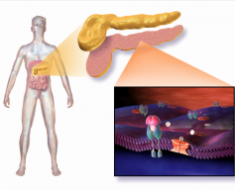When you think of sexually transmitted infections, symptoms like vaginal itching and pelvic pain probably come to mind. But the same STIs that threaten your health down below can infect other body areas. They’re typically transmitted through oral sex or anal sex, but some can be picked up after direct skin contact.
The scary thing about getting an STI in another part of your body is that you’re less likely to recognize signs, so you don’t seek the right treatment—and the infection potentially gets worse. Here are four body areas other than your vagina that can play host to an STI, plus the symptoms to look for.
On your face
You already know that genital herpes can spread to your lips if you have oral sex with someone who has this STI. What you may not know is that the same type of herpes that shows up below the belt can infect other parts of your face, such as around your mouth, Amesh Adalja, MD, an infectious disease physician and senior scholar at Johns Hopkins Center for Health Security, tells Health. Herpes can also appear on your tongue or nose.
How do you know if a sore on your face is herpes? Early signs are the same as genital herpes: tingling and itching, and then as the sore develops, it blisters and scabs over. If you’re unsure, check in with a dermatologist. You can treat herpes with over-the-counter cold sore remedies; your doctor can also prescribe antiviral meds that cut the duration of an outbreak.
In your butt
Yep, we have to go there. Chlamydia, gonorrhea, and syphilis can be transmitted to the rectum if you have anal sex with an infected partner, Karen Brodman, MD, a gynecologist in New York City, tells Health. Your risk of one of these backdoor STIs increases if you develop small tears or nicks in the thin skin of the anus, through which the bacteria can get into your system.
STIs transmitted through skin contact, such as genital herpes or HPV, can develop in or outside the anus and rectum, says Dr. Brodman. Herpes may also show up as sores on the skin of the buttocks. And of course, HIV is spread via anal sex, as are blood-borne viruses such as hepatitis B and C.
Signs of an STI in your behind include rectal burning, unusual discharge, bleeding, pain, or a fissure, says Dr. Brodman. You might also notice blisters or achiness in the groin, she adds. If any of these develop, let your doctor know. And don’t be embarrassed—she’s seen it all before.
In your eyes
STIs that trigger eye infections include herpes, gonorrhea, chlamydia, and syphilis, says Dr. Adalja. The signs of many of these conditions mimic pink eye: think pain, swelling, redness, and discharge.
An eye herpes infection, however, can present differently. If the herpes virus is in your eye, it may result in an outbreak of one or more lesions on the eyelids or even the cornea, triggering pain and sensitivity that could jeopardize your vision by causing scarring. If you have any symptoms, see your ophthalmologist promptly, says Dr. Adalja.
In your throat
STI infections in the soft, moist tissues of the back of the mouth and throat are more prevalent than you might think. Chlamydia and gonorrhea (including the drug-resistant strain known as “super gonorrhea”) can set up shop here if a person contracts either of these infections during oral sex. Scarily, you may not even know it; sometimes the only symptom is a sore throat, according to the Centers for Disease Control.
HPV is another infection that invades the throat—and it’s thought to be behind the recent rise in cases of head and neck cancers, especially among men. While there are more than 100 types of HPV, the type that causes many cases of cervical cancer, HPV 16, is also responsible for most head and neck cancers. Though HPV of the throat is becoming more common, a 2017 study emphasizes that the overall lifetime odds of cancer is low. Still, if you think you might be at risk, talk to your doctor.
Source: Read Full Article





